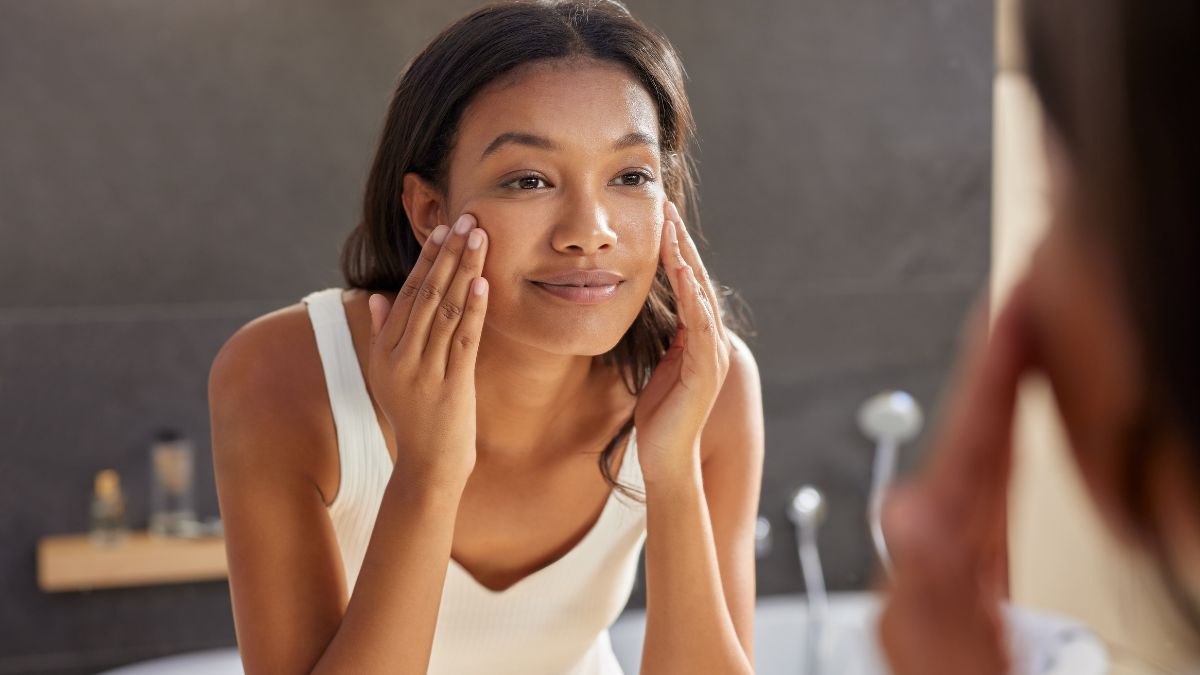- By Bornika Das
- Mon, 25 Aug 2025 08:00 PM (IST)
- Source:JND
Indian skin is distinct, influenced by genetics, tropical environment, lifestyle and cultural traditions. However, a lot of the skincare business in India has traditionally been controlled by Western formulas and products that do not necessarily meet the needs of Indian skin colours and types. From melanin levels that are higher to increased sensitivity to pollution, humidity, and sunlight, Indian skin tends to need a different way of care and treatment. Putting borrowed formulas to use without modification may sometimes result in inefficacy, or worse, skin problems such as pigmentation, acne or barrier disruptions.
Indian skin type, in scientific terms, generally falls under Fitzpatrick Skin Types III to V (dark to dark brown) skin, which basically means Indian skin can hyperpigment easily and develop melanin concentration pockets. Given how different we are from our European counterparts, the sub-continent needs formulations that place the Indian skin first, rather than an afterthought. One-size-fits-all does not apply when our skin reacts differently to UV radiation, environmental aggressors, and even certain actives. However, the formulations that work for their genetic makeup, skin type, weather, sun and pollution exposure is vastly different from Indian skin. In conversation with The Daily Jagran, Saurav Ojha, Co-Founder, Iberia Pharmaceuticals, shares how the skincare future of India can be safer and more potent with the use of its own science.
Pollution In Indian Cities
It is no secret that India holds the dubious distinction of housing some of the most polluted cities in the world. A study of air quality data by CREA ranked Gurgaon as 15 times more polluted than the WHO-recommended standards. Pollution not only stays in the air and impacts the air we breathe, but also impacts the skin. It leads to a weak skin barrier, dullness, as well as accelerated skin ageing.
ALSO READ: How To Keep Your Skin Healthy During Seasonal Changes? Dermatologist Explains
Saurav Ojha states, “There are very few skincare brands and products in India that include pollution-fighting ingredients as their primary ingredient. The formulas that are made in India must focus on incorporating such ingredients, rather than focus on superficial corrections only.”
The hyperpigmentation, which happens due to pollution and subsequent barrier damage can be fixed by focusing on ceramides and other micro-biome repair ingredients. Currently, the focus is on the Western formulations of the 1900s. Saurav Ojha mentions, “These older formulas used silicones for a smooth finish and were mapped out at a time when there was little focus on skin health. These ingredients were cheap, made for western skin, and focused very little on barrier repair.”

Science Behind Indian Skincare (Image Credits: Canva)
Differences In Skin Ageing
Melanin-rich skin ages differently from Caucasian skin, yet we follow the Caucasian skincare formula, which focuses on collagen breakdown and wrinkle prevention. The Indian skin needs barrier repair, hydration, and products that can fight glycation. Saurav Ojha states, “This is a process where collagen in skin is damaged due to sugar molecules, resulting in dull, yellowing skin.” This process of ageing is more pronounced in melanin-rich skin and is often overlooked in mainstream anti-ageing products, which rarely offer targeted glycation defence.
Also, sun damage, dark spots, sallow, tired-looking skin, is common in the Indian subcontinent, which is a prominent sign of ageing. Ageing in white or Caucasian skin is defined more by wrinkles and sagging skin. While skin with melanin has its own issues, it does not wrinkle easily. So, for Indian skin, ageing is not just about fighting wrinkles, but more about calming the skin and removing skin damage.
Ageing in melanin-dense skin happens for reasons other than pollution as well. It also happens due to regular use of hard water, which contains calcium, magnesium, and other chemicals. Saurav Ojha states, “The presence of these chemicals can cause oxidative stress, harm the skin barrier, and cause inflammation. Hard water often creeps up in the day-to-day usage since we cannot see it with the naked eye.” We are still more aware of pollution because it finds its way into mainstream news, unlike hard water, the composition of which is relatively unknown.
ALSO READ: How Stress Shows Up On Your Skin? Dermatologist Explains
Also, India has an inherently humid climate of tropical countries. Humidity can lead to an oily T-Zone (area around the nose and forehead), which in turn causes blackheads, open pores, and uneven texture, which can increase the visible signs of ageing and serve as a biome for acne-causing bacteria. Saurav Ojha states, “Also, actives like Retinol, AHA, etc., which are popularly used abroad, can cause sensitivity in Indian skin unless buffered properly. Needless to say, unhealthy skin is the one that ages faster, unless it is catered for.”
Indian skincare can no longer be an afterthought. It deserves its own research, investment in clinical trials, and formulation. There is a strong market gap which exists, and companies can use this as an opportunity to educate customers about Indian skin type, as well as develop products that are made domestically for the domestic market.

